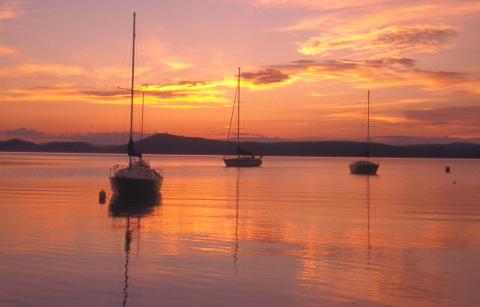Mode of transport: Premier Bus with 45 people capacity
Hiking distance: 0 - 2 mile
Stops:
- Map of Itinerary (Opens in new browser window)
- Hilton Burlington
- Maritime Museum
- Lake Champlain Bridge
- Lunch
- Mt Independence (footbridge during Revolutionary War)
- Bathroom stop
- Hilton Burlington
Drive time: 3 hours
Description:
In this trip, we'll look at the cultural, archaeological and natural history of Vermont's largest lake, At 110 miles long, Lake Champlain is both a transportation corridor and a barrier to human and animal movement. We'll explore the historical significance of this beautiful place and hear from biologists about ongoing studies to understand its ecology. We'll make stops at the Lake Champlain Maritime Museum, the Champlain Bridge and Mt Independence. Mt. Independence is the most intact Revolutionary War site in the US.
Fun Facts About Lake Champlain
Area: 435 square miles of surface water
Width: 12 miles at its widest point
Depth: average depth is 64 feet but the deepest point is between Charlotte, VT and Essex, NY at 400 feet
Islands: 71
Watershed size: 8,234 square miles
Drinking Water: Lake Champlain is a drinking water source for approximately 200,000 people.
Birds: There are 318 species of birds in Vermont that live on, near, or depend on Lake Champlain.

